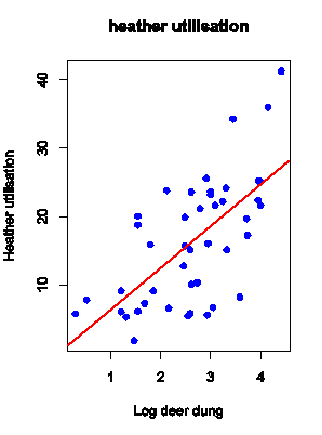What are the consequences for biodiversity of grazing by sheep and/or deer?
We are investigating the grazing impact on the consequences for plant species diversity on heather moorland.
Field sites include those where deer and sheep co-exist and where deer graze alone.
Initial results show that
- Deer dung counts are higher in areas where sheep are removed indicating that deer may move in and replace sheep.
- As deer density (but not sheep) increases heather utilisation will increase (Fig 1).
- Areas with higher heather cover and grouse abundance have lower species (alpha) diversity.
- Heterogeneity in palnt diversity between sites declines as grass height increases and is higher on areas grazed by sheep.
This latter paper is the first time the consequences of grazing for biodiversity will be demonstrated in a detailed way across a geographical and climatic landscape.

Contact:
|